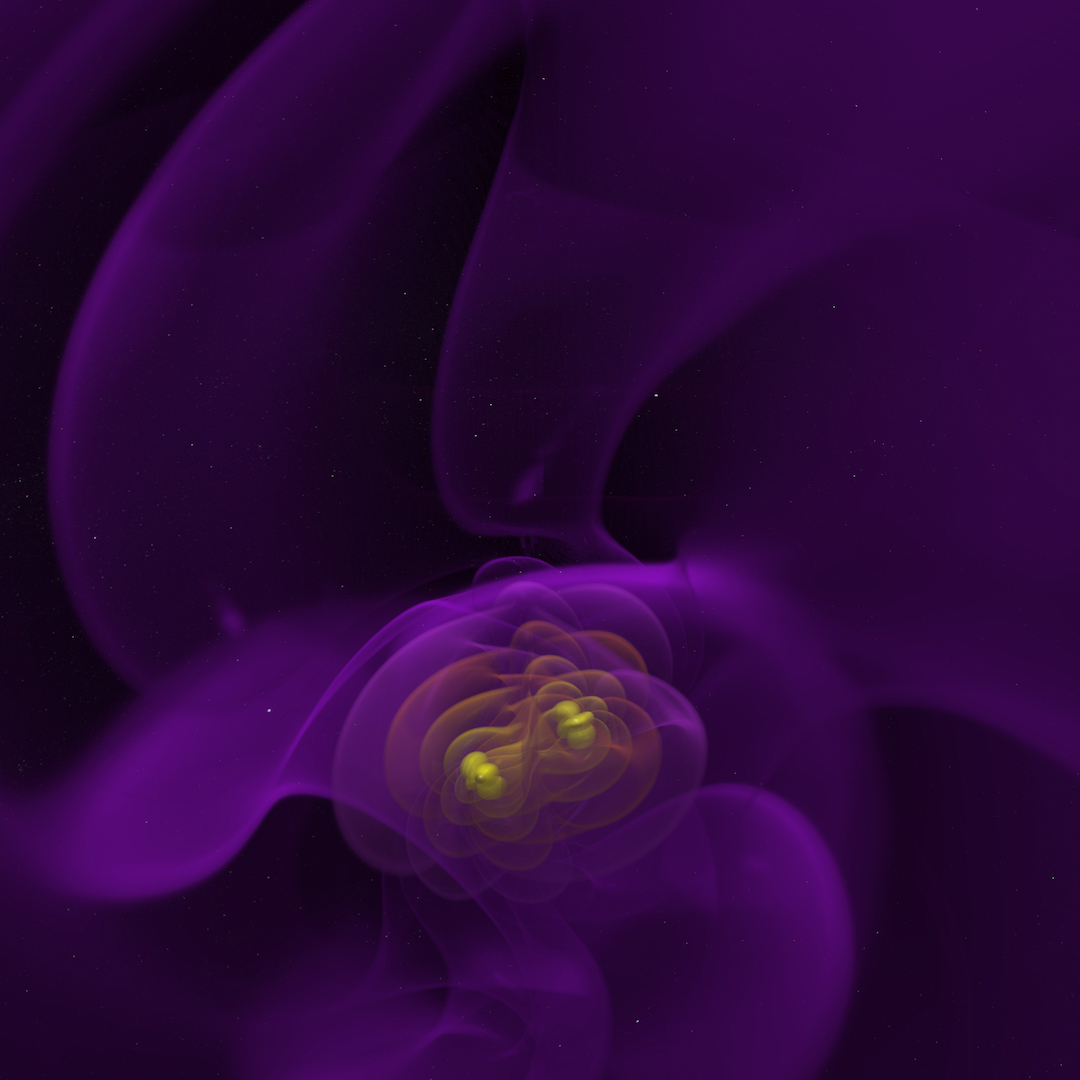NASA's Fermi Preps to Narrow Down Gravitational Wave Sources
Fermi's GBM saw a fading X-ray flash at nearly the same moment LIGO detected gravitational waves from a black hole merger in 2015. This movie shows how scientists can narrow down the location of the LIGO source on the assumption that the burst is connected to it. In this case, the LIGO search area is reduced by two-thirds. Greater improvements are possible in future detections.
Credit: NASA's Goddard Space Flight Center
Watch this video on the NASAgovVideo YouTube channel.
On Sept. 14, waves of energy traveling for more than a billion years gently rattled space-time in the vicinity of Earth. The disturbance, produced by a pair of merging black holes, was captured by the Laser Interferometer Gravitational-Wave Observatory (LIGO) facilities in Hanford, Washington, and Livingston, Louisiana. This event marked the first-ever detection of gravitational waves and opens a new scientific window on how the universe works.
Less than half a second later, the Gamma-ray Burst Monitor (GBM) on NASA's Fermi Gamma-ray Space Telescope picked up a brief, weak burst of high-energy light consistent with the same part of the sky. Analysis of this burst suggests just a 0.2-percent chance of simply being random coincidence. Gamma-rays arising from a black hole merger would be a landmark finding because black holes are expected to merge “cleanly,” without producing any sort of light.
Detecting light from a gravitational wave source will enable a much deeper understanding of the event. With its wide energy range and large field of view, the GBM is the premier instrument for detecting light from short gamma-ray bursts (GRBs), which last less than two seconds. They are widely thought to occur when orbiting compact objects, like neutron stars and black holes, spiral inward and crash together. These same systems also are suspected to be prime producers of gravitational waves.
Currently, gravitational wave observatories possess relatively blurry vision. For the September event, dubbed GW150914 after the date, LIGO scientists could only trace the source to an arc of sky spanning an area of about 600 square degrees, comparable to the angular area on Earth occupied by the United States.
Assuming the GBM burst is connected to this event, the GBM localization and Fermi's view of Earth combine to reduce the LIGO search area by about two-thirds, to 200 square degrees. With a burst better placed for the GBM’s detectors, or one bright enough to be seen by Fermi’s Large Area Telescope, even greater improvements are possible.
Black hole mergers were not expected to emit significant X-ray or gamma-ray signals because orbiting gas is needed to generate light. Theorists expected any gas around binary black holes would have been swept up long before their final plunge. For this reason, some astronomers view the GBM burst as most likely a coincidence and unrelated to GW150914. Others have developed alternative scenarios where merging black holes could create observable gamma-ray emission. It will take further detections to clarify what really happens when black holes collide.
This visualization shows gravitational waves emitted by two black holes (black spheres) of nearly equal mass as they spiral together and merge. Yellow structures near the black holes illustrate the strong curvature of space-time in the region. Orange ripples represent distortions of space-time caused by the rapidly orbiting masses. These distortions spread out and weaken, ultimately becoming gravitational waves (purple). The merger timescale depends on the masses of the black holes. For a system containing black holes with about 30 times the sun’s mass, similar to the one detected by LIGO in 2015, the orbital period at the start of the movie is just 65 milliseconds, with the black holes moving at about 15 percent the speed of light. Space-time distortions radiate away orbital energy and cause the binary to contract quickly. As the two black holes near each other, they merge into a single black hole that settles into its "ringdown" phase, where the final gravitational waves are emitted. For the 2015 LIGO detection, these events played out in little more than a quarter of a second. This simulation was performed on the Pleiades supercomputer at NASA's Ames Research Center. Fixed view.
Credit: NASA/Bernard J. Kelly (Goddard and Univ. of Maryland Baltimore County), Chris Henze (Ames) and Tim Sandstrom (CSC Government Solutions LLC)
Watch this video on the NASAgovVideo YouTube channel.
Same as above. Fly-in version.
Credit: NASA/Bernard J. Kelly (Goddard and Univ. of Maryland Baltimore County), Chris Henze (Ames) and Tim Sandstrom (CSC Government Solutions LLC)

This image simulates the view of Earth as seen by Fermi at the time LIGO detected gravitational waves from a black hole merger, at 09:50:45 UT on Sept. 14, 2015. The spacecraft was passing over Halayeb, Sudan, at an altitude of about 336 miles (540 km).
Credit: NASA’s Goddard Space Flight Center/Francis Reddy (Syneren Technologies)
4000x4000 30fps square version suitable for dome projection. One version with on-screen text, one without.
Credits
Please give credit for this item to:
NASA's Goddard Space Flight Center. However, individual items should be credited as indicated above.
-
Science writer
- Francis Reddy (University of Maryland College Park)
-
Producers
- Swarupa Nune (InuTeq)
- Scott Wiessinger (USRA)
-
Visualizer
- Francis Reddy (University of Maryland College Park)
-
Animator
- Walt Feimer (KBR Wyle Services, LLC)
-
Data visualizer
- Ernie Wright (USRA)
-
Scientists
- Christopher E. Henze (NASA/ARC)
- John G. Baker (NASA/GSFC)
- Bernard J. Kelly (UMBC)
Release date
This page was originally published on Monday, April 18, 2016.
This page was last updated on Tuesday, November 14, 2023 at 12:19 AM EST.

![Music credit: "Stealth Car" by Tom Sue [GEMA] and Zac Singer [GEMA]; Ed. Berlin Production Music/Universal Publishing Production Music GmbH GEMA; Berlin Production Music; Killer Tracks Production MusicWatch this video on the NASA Goddard YouTube channel.](/vis/a010000/a012500/a012539/hubble_rogue_black_hole_thumbnail2.png)